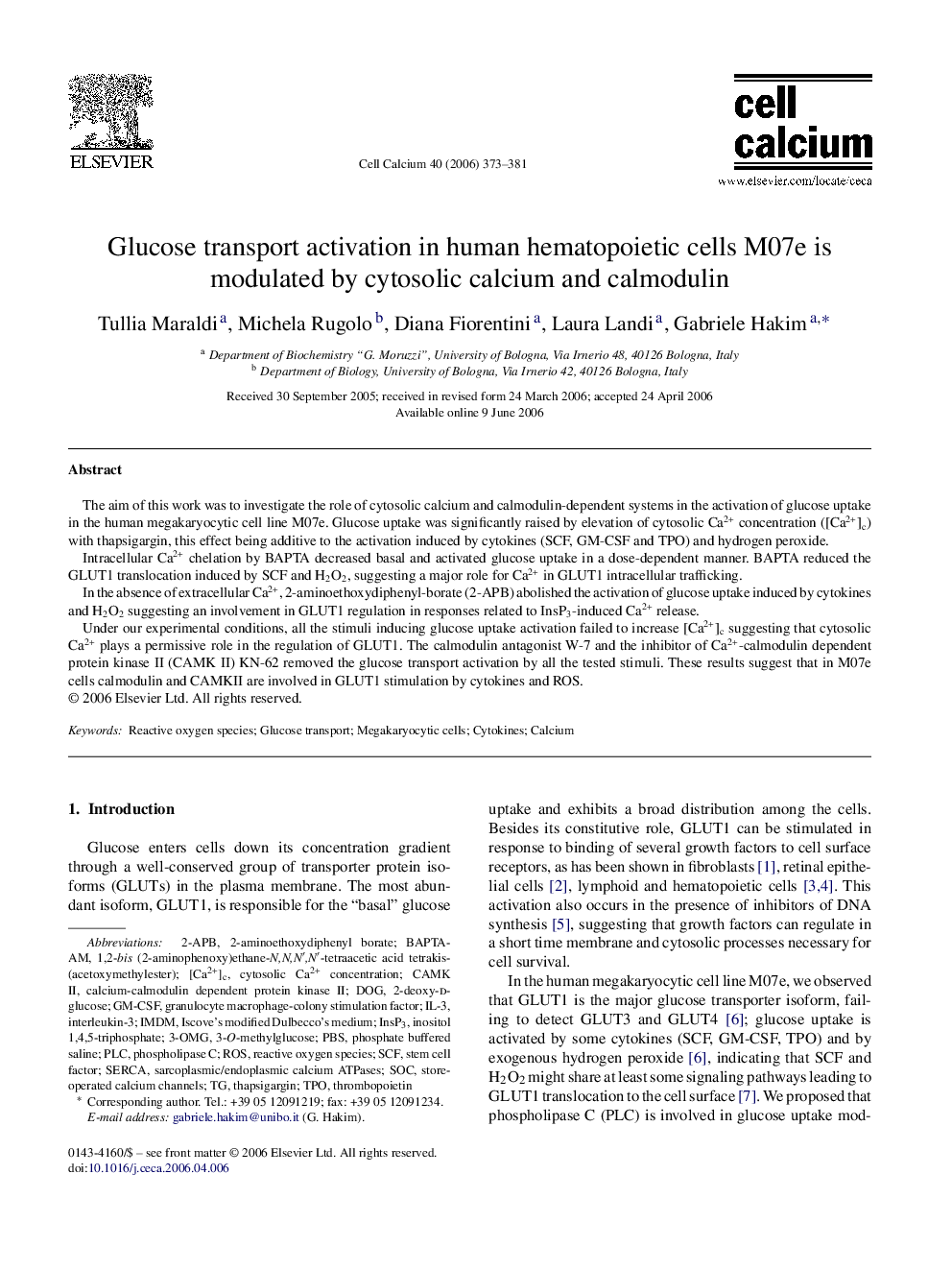| Article ID | Journal | Published Year | Pages | File Type |
|---|---|---|---|---|
| 2166726 | Cell Calcium | 2006 | 9 Pages |
The aim of this work was to investigate the role of cytosolic calcium and calmodulin-dependent systems in the activation of glucose uptake in the human megakaryocytic cell line M07e. Glucose uptake was significantly raised by elevation of cytosolic Ca2+ concentration ([Ca2+]c) with thapsigargin, this effect being additive to the activation induced by cytokines (SCF, GM-CSF and TPO) and hydrogen peroxide.Intracellular Ca2+ chelation by BAPTA decreased basal and activated glucose uptake in a dose-dependent manner. BAPTA reduced the GLUT1 translocation induced by SCF and H2O2, suggesting a major role for Ca2+ in GLUT1 intracellular trafficking.In the absence of extracellular Ca2+, 2-aminoethoxydiphenyl-borate (2-APB) abolished the activation of glucose uptake induced by cytokines and H2O2 suggesting an involvement in GLUT1 regulation in responses related to InsP3-induced Ca2+ release.Under our experimental conditions, all the stimuli inducing glucose uptake activation failed to increase [Ca2+]c suggesting that cytosolic Ca2+ plays a permissive role in the regulation of GLUT1. The calmodulin antagonist W-7 and the inhibitor of Ca2+-calmodulin dependent protein kinase II (CAMK II) KN-62 removed the glucose transport activation by all the tested stimuli. These results suggest that in M07e cells calmodulin and CAMKII are involved in GLUT1 stimulation by cytokines and ROS.
